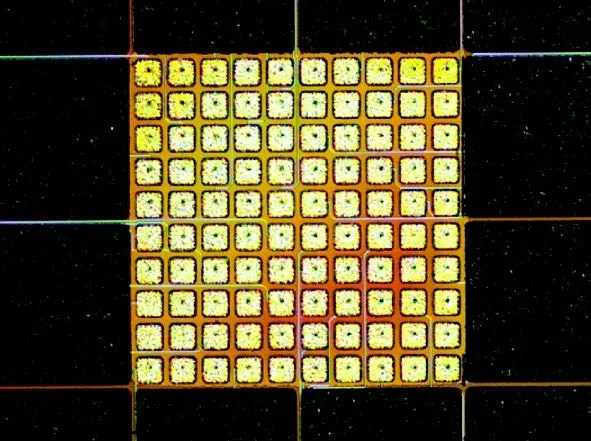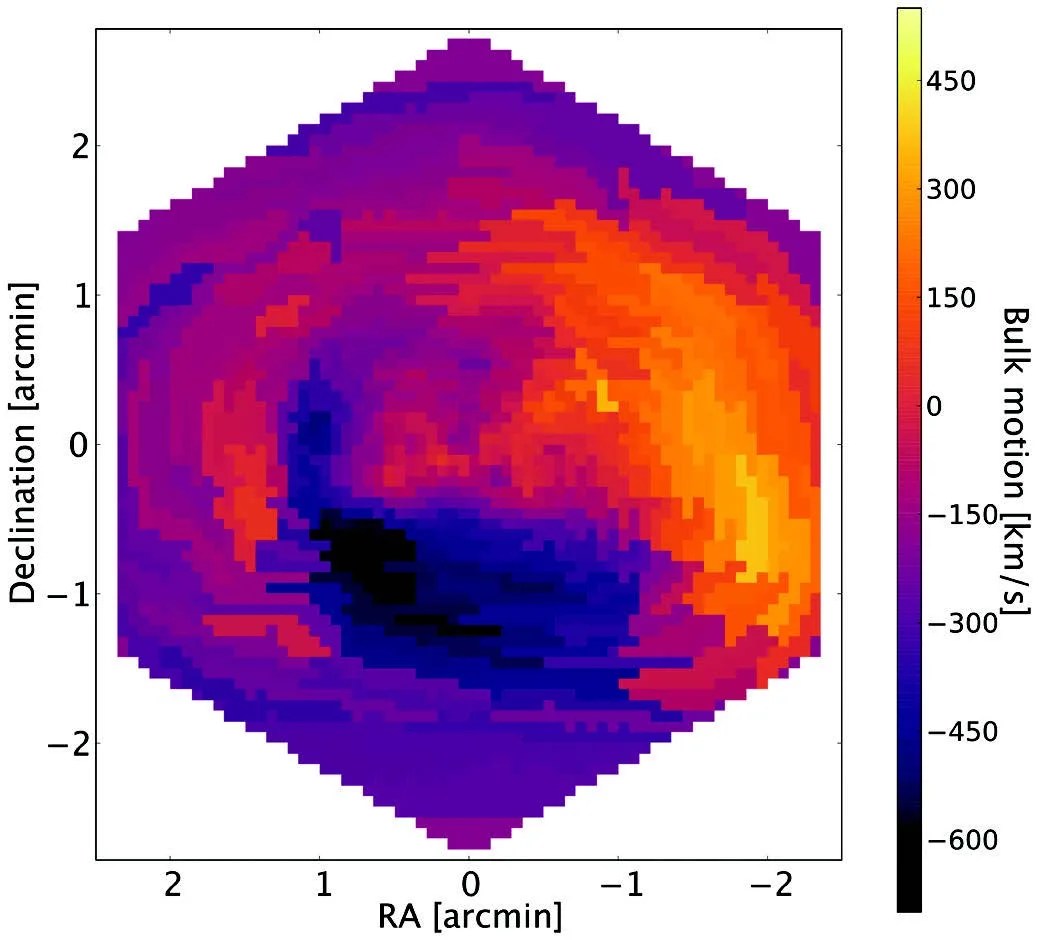Technology Development
NASA is part of an international team developing a cutting edge microcalorimeter X-ray camera that will provide extraordinarily detailed information about energetic cosmic phenomena.
An X-ray microcalorimeter is a non-dispersive spectrometer that uses an equilibrium approach to energy measurement—the energy of an X-ray photon heats an isolated thermal mass, and the temperature change is measured. The ultimate energy resolution is determined by how well the temperature pulse can be measured against a background of thermal fluctuations; thus, high-resolution spectrometers must be operated at very low temperatures (< 0.1 K). The basic idea for these instruments was proposed three decades ago, but since then, a variety of implementations and optimizations have been developed, with a steady improvement in capability and an increase in the number of imaging elements (pixels).

With each improvement, new mission concepts are developed that require even larger arrays. The NASA/Japan Aerospace Exploration Agency (JAXA) Soft X-ray Spectrometer (SXS) instrument onboard the JAXA Hitomi mission had 36 pixels, but the X-ray Integral Field Unit (X-IFU) instrument that will fly on the European Space Agency’s Athena mission requires an array of about 4000 pixels, each about 0.25 mm wide (covering 5 arc seconds of the sky). X-IFU will be a groundbreaking X-ray camera capable of distinguishing tens of thousands of X-ray colors. As part of the X-IFU consortium, NASA is developing the superconducting transition edge sensor (TES) array employed on the instrument. These sensors, composed of Molybdenum/ Gold TES thermometers and Gold/Bismuth X-ray absorbers, achieve better than 2.5 eV resolution.
Impact
Cosmic phenomena that produce X rays characterize the evolution of cosmic structures on both large and small scales. High-resolution X-ray spectroscopy can determine density and temperature, identify ions and determine their velocities, and enable scientists to study effects such as turbulence or the environment near supermassive black holes. Combining imaging with spectroscopy, a microcalorimeter instrument probes dynamics and variations within spatially extended objects such as supernova remnants and galaxy clusters with unprecedented sensitivity.

Status and Future Plans
In 2016, the NASA team focused on working with partners at SRON, the Netherlands Institute for Space Research, to prepare for an X-IFU demonstration model incorporating a kilopixel TES array. Because the planned readout for X-IFU uses frequency-division multiplexing, which involves applying alternating voltages to the TES thermometers, the near-term focus has been on determining the optimal pixel design for that mode of operation. Important progress was also achieved using backup multiplexing technologies that apply a constant voltage to the TES thermometers (time-division and code-division). A timedivision multiplexing demonstration of a column of 32 TES pixels achieved 2.55 eV average energy resolution at 6 keV at a speed appropriate for the original X-IFU baseline. The team completed the layout for a full-sized X-IFU prototype array, and in the next year these prototypes will be fabricated and tested. The team also successfully demonstrated that pixels with different characteristics (width, X-ray absorber materials and thickness, and superconducting transition temperature) can be incorporated into a single array, should it be determined to be optimal to do so on X-IFU or another mission.
Sponsoring Organization
The NASA Astrophysics Division has been investing in X-ray microcalorimeter technology for three decades. The TPCOS program has funded recent progress via an award to a team including members at GSFC; the National Institute of Standards and Technology in Boulder, Colorado; and Stanford University. PI Caroline Kilbourne and Simon Bandler of NASA GSFC lead this technology development effort.


































